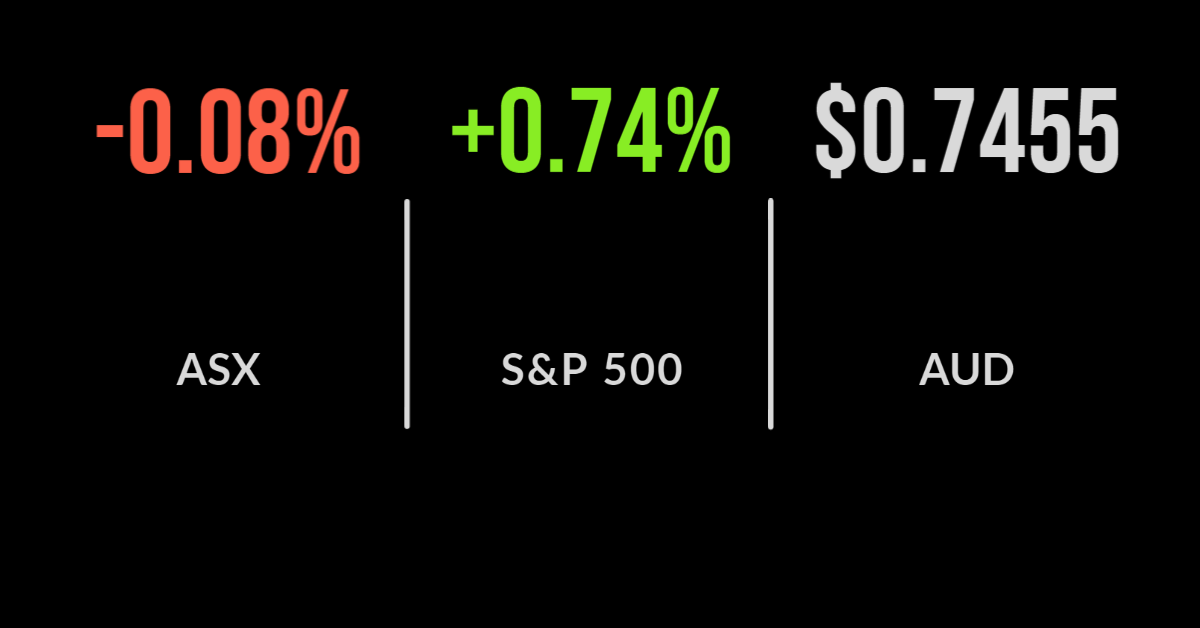ASX closes 0.1% lower as large miners drag
Tech succumbs to mining, ASX weaker, Tabcorp, Cochlear updates
The S&P/ASX200 (ASX: XJO) weakened throughout the day ultimately finishing 0.1% lower with a resurgent technology sector (up 1.6%) unable to overcome a continued sell off in the mining (-1.4%) and energy sector.
Annual meeting season is upon us with investor poring through announcements for more guidance into an increasingly uncertain economy.
A2 Milk (ASX: A2M) and Zip Co (ASX: Z1P) were the standouts, both gaining over 5% with the likes of Westfield (ASX: URW) and Rio Tinto (ASX: RIO) the major drags.
Hearing aid manufacturer Cochlear (ASX: COH) rallied 1.9% after management confirmed they expect to deliver 10 to 20% profit growth in 2022 as surgery rates across the world finally begin to recover.
Tabcorp (ASX: TAH) fell 2.7% after confirming the costly split of their lotteries and Keno businesses will occur by June 2022, the total expense is set to be between $225 and $275 million leading many to question the strategy.
Wagering business has also fallen over 17% in the first months of the financial year as venues remained closed.
BHP production falls, Bapcorp struggles with comparables, Brambles hedge
BHP Group (ASX: BHP) fell 2% as the weaker iron ore price coincided with another underperformance from their iron ore operations.
The group failed to match their 2020 output in the third quarter, shipping 70 million tonnes, 3.5% lower.
Output was hampered by extended but expected maintenance requirements but also a growing shortage of train drivers. Coal and copper volumes were also lower.
Sticking with materials Fletcher Building (ASX: FBU) gained close to 2% despite warning that their profit margins will fall below the 10% target in 2022.
Higher costs and increased investment are expected to be overcome in the second half.
Construction remains tight with margins of just 3 to 5% offering little room for error, with their Australian operations at 5 to 7% and residential US construction significantly better.
Brambles (ASX: BXB) flexed its oligopolistic muscles once again reporting a 9% increase in sales to US$1.292 billion for the quarter.
Majority of the gains are coming from the pass through of higher costs in every other part of their business through surcharge mechanisms.
This was evidenced by new business growth of just 2% but sales growth of 9% in the US, 8 in Europe and 11% in Asia.
On the positive, this shows signs of a quality company that is able to pass on its costs, but also growing pressure on their customers.
US rally continues, earnings remain resilient, home builds slow on higher costs
The US markets continue to overcome the October curse, rallying again on Tuesday as some 66% of companies continue to beat even elevated earnings expectations. The S&P 500 gained 0.7%, the Dow Jones 0.6 and the Nasdaq 0.7%.
Netflix (NYSE: NFLX) was broadly flat ahead of its report after the market closes. Investors are paying close attention to earnings season as a number of short-term risks creep in, including inflation, labour and currency costs, with those companies able to pass this through to customers in favour.
Johnson & Johnson (NYSE: JNJ) was the highlight overnight, with the medical company reporting some US502 million in worldwide sales of their COVID-19 vaccine, which sent the share price 2% higher.
It was a positive story across the business with a 10% revenue increase, partially driven by price rather than volume, adding to a 3% growth in earnings.
Consumer health product sales grew 5.3% in the quarter, pharmaceuticals 13% and medical devices 8%.
In what may be a positive sign for tired homebuyers in Australia, new home construction slowed by 1.6% in the US as cost pressures bite.








